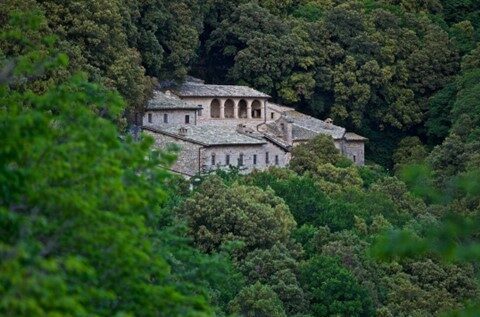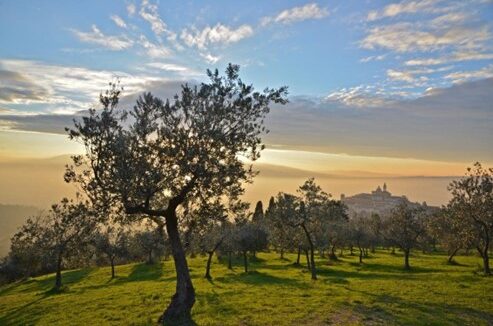Trail name and description
- Location: Umbria (Italia)
- 43°4’12”36 N 12°37’2”64 E
Level & Scale of difficulty used for hiking
E (For more info have a look here)
Duration
5.5 hrs (return to Assisi can be made by train or bus)
Distance
14,8 km
Refreshing points
Bregno spring (water not always present)
Shelters
None
Best period for hiking
from March to November, especially June and October
Climate
having a Mediterranean climate, Umbrian weather is mildly cold in winter, January is the coldest month
how to reach the starting point
Equipment and outfit required
You should pack a bottle of water, as it is not always possible to stock up on water on the way, a hat, windbreaker, whatever you consider indispensable on a personal level, remembering not to make the rucksack unnecessarily heavy, hiking footwear.


This path across the principle olive-growing areas of the Umbria region (“Assisi-Spoleto Olive Belt”). The “Assisi-Spoleto Olive Belt” is an Apennine piedmont landscape, the olive belt runs between Assisi and Spoleto for 40 kilometers.
It is a unique, unrepeatable heritage that involves six municipalities in the province of Perugia: Assisi, Spello, Foligno, Trevi, Campello sul Clitunno, and Spoleto.
The massive cultivation of the olive tree (9,000 hectares of land and almost 1,500,000 plants) is the millenary result of a culture of a non-spontaneous nature.
From both Assisi and Spello, two jewels of the Middle Ages, there is plenty of routes that lead you to other smaller villages (Bevagna, Montefalco, Trevi etc) and monasteries, Benedictine and Franciscan, scattered on Mount Subasio (1290 m.), which are important for the historical, landscape and anthropic value they represent.
The Eremo delle Carceri (alt. 791 m) is an ancient hermitage set within the thick woodland of mount Subasio, 4 km from Assisi. Here, Saint Francis and his companions settled in isolation to lead of life of austerity and more intense prayer.
According to tradition, Saint Francis got the hermitage as a gift from the Benedictines.
An interesting walk through the woods starts with the bronze statue by Vincenzo Rosignoli, San Francis liberating the doves leading to an old oak tree on which the birds are said to have gathered to be blessed by Francis.
Typical dishes of the best Umbrian tradition such as roast lamb, truffle omelette and bruschetta (grilled bread) seasoned with EVO are cooked in restaurants. To enhance its flavour, it is recommended as a condiment on cooked (red potatoes) or wild plants (‘rapunzoli’).
Both Spello and Assisi offer many different types of accommodation: from camping to hotels, as well as religious hospitality sites.
Two events are particularly interesting: the Calendimaggio in Assisi, in which music and scenes of medieval life are re-enacted, and the infiorate in Spello, on the occasion of Corpus Domini, real paintings made with the multicoloured petals of flowers picked on Mount Subasio above.
In addition to this, during the months of the oil harvest, it is possible to watch the picking of the precious fruit and the pressing in the numerous oil mills in the area.
In Assisi and the Subasio Regional Park, 10 paths linked to St Francis of Assisi’s Canticle of the Creatures have been identified and marked.
Useful links: